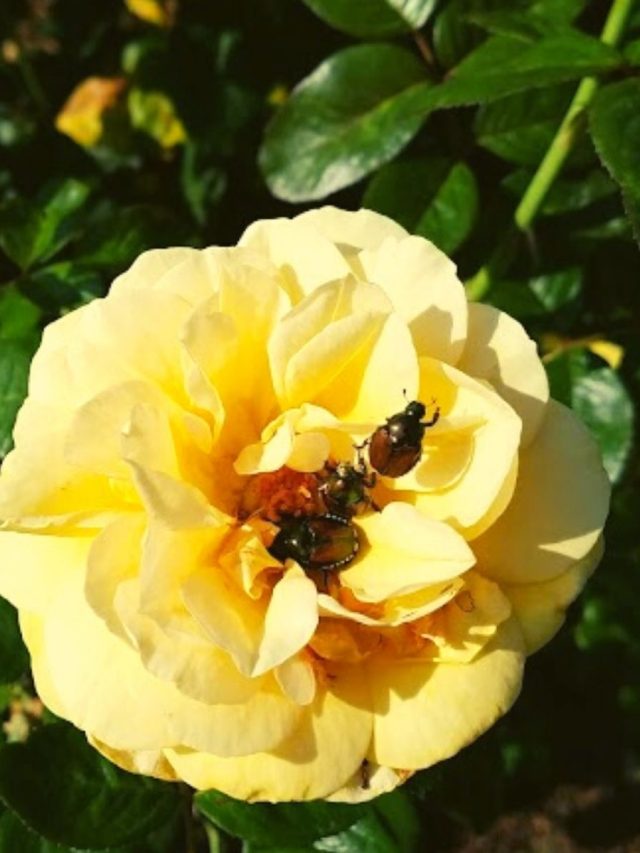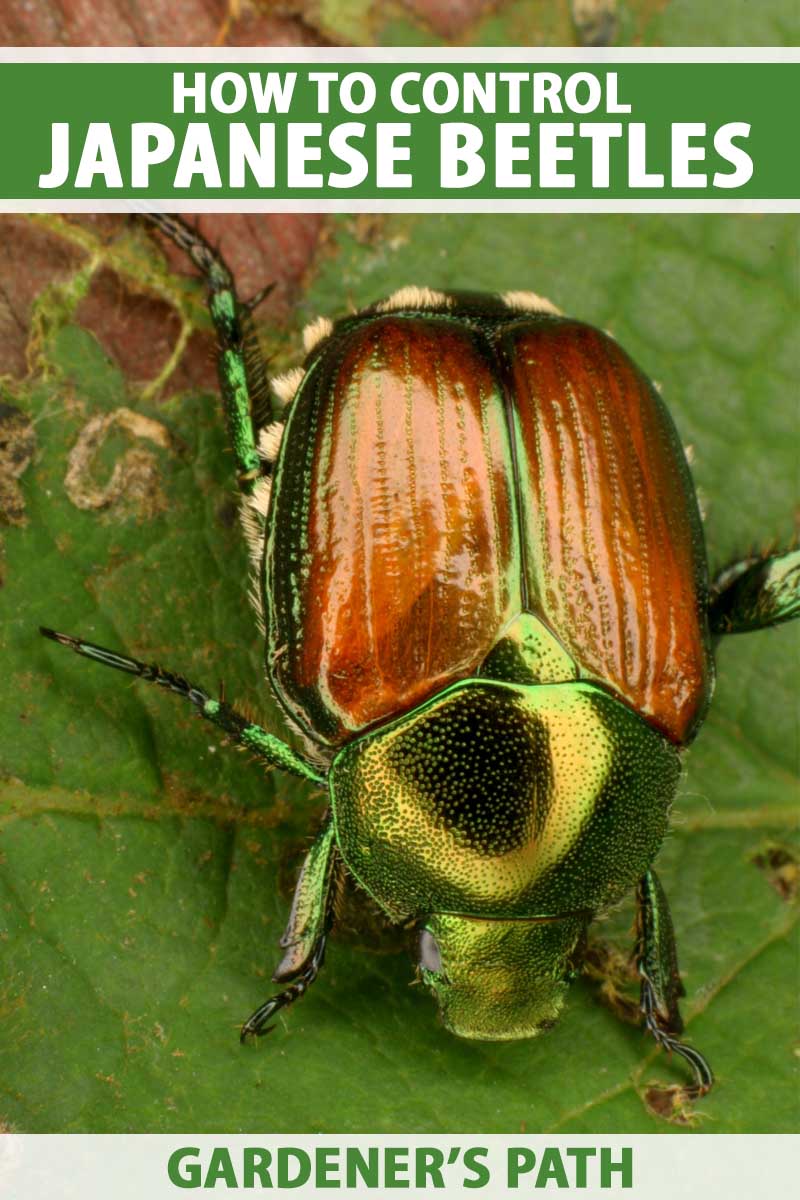Gardening enthusiasts and homeowners often face a persistent challenge: Japanese beetles wreaking havoc in their gardens. These invasive pests can destroy plants, flowers, and crops with alarming speed. If you're seeking effective solutions to eliminate Japanese beetles from your garden, you're in the right place. This comprehensive guide will walk you through proven strategies and expert tips to combat these pests and protect your beloved plants.
Japanese beetles are not just a nuisance; they can cause significant damage to your garden if left unchecked. Understanding their behavior, lifecycle, and vulnerabilities is crucial to devising a successful eradication plan. In this article, we will explore various methods, from natural remedies to chemical interventions, ensuring your garden remains healthy and pest-free.
Whether you're a seasoned gardener or a beginner, this article will equip you with the knowledge and tools necessary to tackle the Japanese beetle problem effectively. Let's dive in and discover how you can reclaim your garden and enjoy its beauty without the interference of these destructive pests.
Read also:Dennis Estate Jamaica A Legacy Of Excellence And Natural Beauty
Table of Contents
- Introduction
- The Biology of Japanese Beetles
- Understanding the Damage They Cause
- Natural Solutions to Eliminate Japanese Beetles
- Chemical Solutions for Japanese Beetle Control
- Using Traps to Combat Japanese Beetles
- Preventive Measures to Keep Them Away
- Choosing Resistant Plants
- Introducing Beneficial Insects
- Long-Term Strategies for Beetle-Free Gardens
- Conclusion
The Biology of Japanese Beetles
Understanding the biology of Japanese beetles is key to developing effective solutions. These insects belong to the scarab beetle family and are native to Japan. They were first discovered in the United States in 1916 and have since become a major agricultural and horticultural pest.
Life Cycle of Japanese Beetles
The life cycle of Japanese beetles consists of four stages: egg, larva, pupa, and adult. The larvae, commonly referred to as white grubs, spend the winter underground and emerge in late spring. Adult beetles feed on plants during the summer, laying eggs that develop into the next generation of grubs.
According to the USDA, Japanese beetles can lay up to 60 eggs in a single season, making population control a significant challenge.
Understanding the Damage They Cause
Japanese beetles are voracious eaters, capable of defoliating entire plants. They prefer feeding on the soft tissues of leaves, leaving only the veins intact. This damage weakens plants, stunts growth, and reduces their ability to produce fruit or flowers.
Common Plants Targeted by Japanese Beetles
- Roses
- Grapes
- Raspberry bushes
- Birch trees
- Elderberry shrubs
These plants are particularly vulnerable due to their high nutritional value for the beetles. Identifying which plants are at risk allows gardeners to implement targeted protection measures.
Natural Solutions to Eliminate Japanese Beetles
Natural solutions are often preferred by environmentally conscious gardeners. These methods are safe, effective, and sustainable for long-term pest control.
Read also:Jennifer Brooks Sykes A Comprehensive Guide To Her Life And Career
Handpicking Beetles
Handpicking is a simple yet effective method for small gardens. Wear gloves and gently remove beetles from plants, dropping them into a bucket of soapy water. This method works best early in the morning when beetles are less active.
Using Neem Oil
Neem oil is a natural insecticide derived from the seeds of the neem tree. It disrupts the feeding and reproductive cycles of Japanese beetles, making it an excellent choice for organic gardening. Mix neem oil with water according to the product instructions and spray it directly on affected plants.
Chemical Solutions for Japanese Beetle Control
While natural solutions are ideal, chemical interventions may be necessary for severe infestations. Always follow safety guidelines and use products approved for residential use.
Pyrethrin-Based Sprays
Pyrethrin-based sprays are highly effective against Japanese beetles. These sprays kill beetles on contact and provide residual protection. However, they may also harm beneficial insects, so use them sparingly and only when necessary.
Using Traps to Combat Japanese Beetles
Japanese beetle traps use pheromones and floral lures to attract and capture beetles. While effective, these traps can sometimes attract more beetles to your garden if not placed strategically.
Placement Tips for Beetle Traps
- Place traps at least 20-30 feet away from vulnerable plants.
- Set traps upwind to maximize their effectiveness.
- Empty traps regularly to prevent overcrowding and reduce odor.
Traps are most effective when used in conjunction with other control methods.
Preventive Measures to Keep Them Away
Prevention is key to minimizing Japanese beetle damage. By creating an unfavorable environment for these pests, you can reduce their numbers significantly.
Maintaining Healthy Soil
Healthy soil discourages the development of white grubs. Regularly aerate and fertilize your lawn to promote strong root growth. Avoid overwatering, as wet soil conditions favor grub survival.
Using Row Covers
Row covers are physical barriers that prevent adult beetles from reaching your plants. Install them early in the growing season and remove them when plants require pollination.
Choosing Resistant Plants
Some plants are naturally resistant to Japanese beetles. Incorporating these into your garden can reduce the likelihood of infestations.
Beetle-Resistant Plant Varieties
- Begonias
- Boxwood
- Holly
- Lilac
- Oak trees
By diversifying your garden with resistant plants, you create a less appealing environment for Japanese beetles.
Introducing Beneficial Insects
Encouraging beneficial insects in your garden can help control Japanese beetle populations naturally. Ladybugs, lacewings, and parasitic wasps prey on beetle larvae and eggs.
Creating a Habitat for Beneficial Insects
- Plant flowers that attract beneficial insects, such as dill, fennel, and yarrow.
- Avoid using broad-spectrum pesticides that harm beneficial insects.
- Provide a water source, such as a shallow dish filled with stones and water.
By fostering a balanced ecosystem, you can reduce reliance on chemical controls.
Long-Term Strategies for Beetle-Free Gardens
Developing a long-term pest management plan is essential for maintaining a healthy garden. Combine multiple strategies to address both current infestations and future threats.
Rotating Crops and Plants
Rotating crops and plants disrupts the life cycle of Japanese beetles by removing their preferred food sources. This practice also enriches soil health and promotes biodiversity.
Monitoring and Early Intervention
Regular monitoring of your garden allows for early detection of beetle activity. Addressing infestations promptly prevents them from escalating into major problems.
Conclusion
Japanese beetles pose a significant threat to gardens, but with the right strategies, you can effectively eliminate them and protect your plants. By understanding their biology, employing natural and chemical solutions, and implementing preventive measures, you can create a beetle-free environment.
We encourage you to share your experiences and tips in the comments below. Your insights can help fellow gardeners combat this common pest. Additionally, explore our other gardening articles for more expert advice and solutions. Together, let's cultivate thriving, pest-free gardens!


